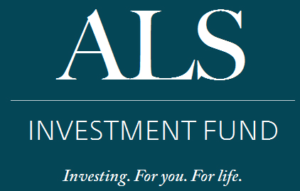

This manifesto sets out our intentions and starting principles as Qurit Alliance. The Manifesto continues to guide us in our role as member of the investment committee of the ALS Investment Fund.
ALS is a neurodegenerative disease characterised by progressive muscular paralysis. It is a devastating disease that leads to muscle weakness, difficulty in swallowing, talking and eventually paralysis and death. Most people who develop ALS are between the age of 40 and 70, with an average age of 55 at the time of diagnosis. However, there are cases of the disease striking persons in their twenties and thirties. Overall, there is a slight male prevalence (M:F ratio~1.5:1).
Currently there is only one drug therapy approved in ALS, which extends life by 3 months only. However, with increasing scientific knowledge and potential to translate this in ALS therapy, we foresee a revolutionary change in ALS treatment.
Approximately two thirds of patients with typical ALS have a spinal form of the disease (limb onset) and present with symptoms related to muscle weakness and wasting, where the symptoms may start in the upper and lower limbs. Gradually, spasticity may develop, affecting manual dexterity and gait. Patients with bulbar onset ALS usually present difficulties in speech and swallowing. Limb symptoms can occur almost simultaneously with bulbar symptoms and in the vast majority of cases will manifest within 1–2 years. Paralysis is progressive and leads to death, due to respiratory failure, within 2–3 years for bulbar onset cases and 3–5 years for limb onset ALS cases.
Most of the research on prevalence and incidence numbers of ALS has been performed in Europe. It appears that the diversity of ALS epidemiology is related to the population demographics. Also, ALS is more common among the elderly, thus in light of the global trend of increasing life expectancy the incidence numbers may increase. Other factors that have been considered to be related to the occurrence of ALS are environmental risk factors, geographical differences and genomic epidemiology.
A review of published incidence and prevalence literature in Europe and the US revealed that the median incidence rate in Europe is 2.7/100,000 person years resulting in 15.355 estimated cases. Median prevalence is 5.4/100,000 person years corresponding to 39.863 cases (Chiò, et al., 2013). In the US these numbers are similar as the incidence is 10.131 cases annually and the prevalence is 36,480 cases (Borlongan, et al., 2013). Thus, in the Western world approximately 75,000 patients are currently eligible for new drug therapy.
Given its prevalence, ALS is an orphan or rare disease. From a regulatory perspective rare (or orphan) diseases are defined as those affecting less than 200,000 patients in the US or no more than five out of 10,000 of the general population in the EU. Nowadays, a number of unique clinical, regulatory and commercial challenges are associated with the development of therapies for rare diseases.
There are limited pharmacotherapeutic options for the treatment of ALS; the mainstay of management is symptomatic treatment. ALS patients who receive care at a multidisciplinary clinic may get a better prognosis than patients attending a general neurology clinic. Median survival is up to 7.5 months longer for the patient group treated at a multidisciplinary clinic and up to 2 months more for patients with bulbar dysfunction. Overall, the data suggest that active management enhances survival (Gordon, 2013).
Currently, only one drug therapy has been approved for the treatment of ALS. Riluzole (Rilutek) is a neuroprotective drug that blocks glutamatergic neurotransmission in the central nervous system, thereby preventing apoptosis (programmed cell death) of the motor neuron. The beneficial effects of riluzole in the treatment of ALS are, however, rather modest and this therapy only prolongs life by 3 months.
All other pharmacotherapeutic treatment options, commonly used in the clinical management of ALS, are palliative treatments aiming at reducing signs and symptoms associated with the disease but which, on their own, are not specifically indicated for ALS (e.g. treatment of muscle spasms, pain, insomnia, dysphagia and emotional instability).
In addition, supportive non-pharmacotherapeutic treatments may be required, like mechanical ventilation for the management of respiratory insufficiency. However, none of these therapies prolongs life and they should be considered only as symptom suppression options.
Although many drugs have been tested on ALS patients over the last 20 years, none of them has shown adequate clinical efficacy. Reasons for these failures can be diverse, including insufficient exposure at the site of action (pharmacokinetics), insufficient drug efficacy or non-validated drug targets (pharmacodynamics) or poorly designed proof-of-concept trials. Demonstrating efficacy in ALS patients is difficult as there are no reliable biomarkers predictive of efficacy, the manifestation of the disease across the population is highly variable and efficacy is measured by means of subjective questionnaires.
Nature Medicine blog (May 30, 2014):
Uncertain of the future, three ALS patients spearhead a new fund
C&EN article (May 26, 2014):
Next Wave Rare Disease Funding
Financieele Dagblad (May 24, 2014):
Strijd Tegen ALS – Qurit Alliance
Financieele Dagblad (May 24, 2014):
Ernstig ziek, neem research en funding in eigen hand
• Qurit Introduction video:
The board works without compensation. Please find our most recent annual report here.